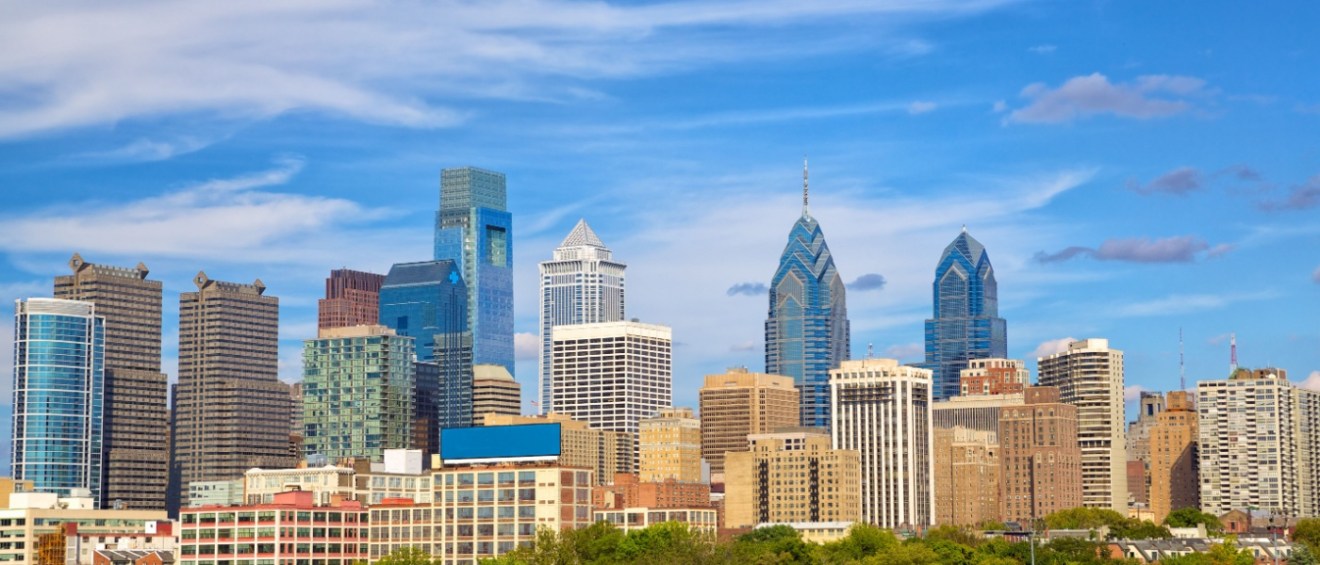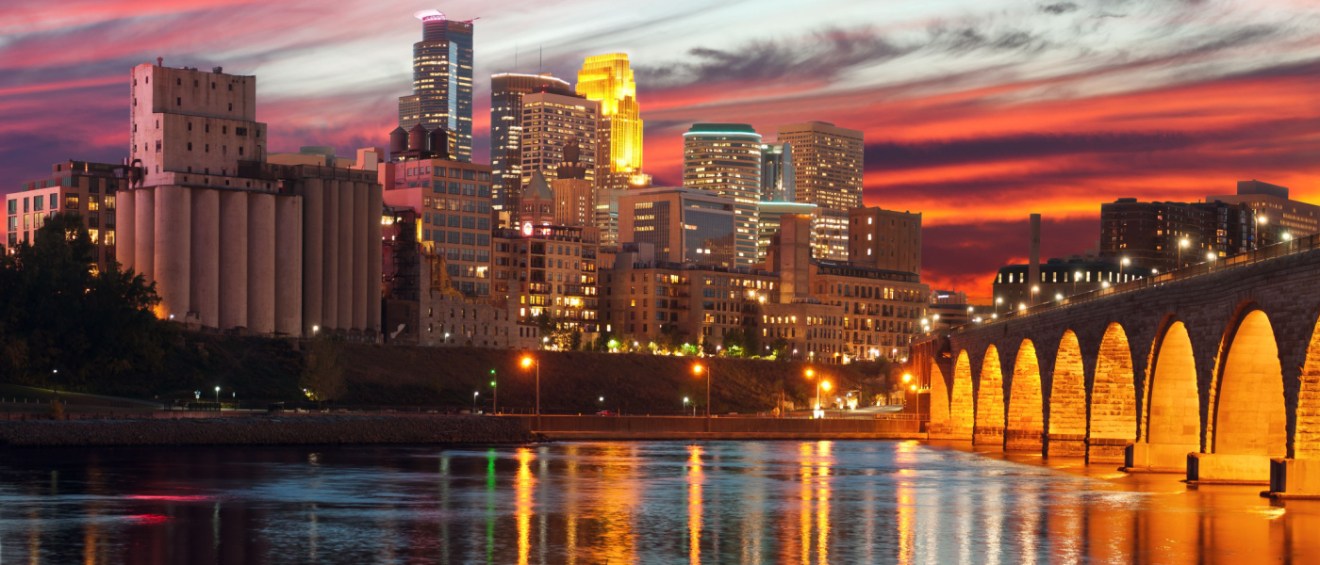Live-Work-Play Apartments Quadrupled in 10 Years, Blending Lifestyle & Workstyle in a Post-Pandemic World
Share this article:
Live-work-play apartments are rapidly rising in popularity, quadrupling in number compared to 10 years ago, from 10,000 to 43,000 apartments per year. Manhattan, New York leads overall, with one-fifth of the total number of U.S. apartments in mixed-use buildings, while Washington, D.C. is the leader of the last decade.
As our work and home lives blend together — especially for those who are able to work from anywhere — the line between our living space and our workspace is blurring. However, if your job feels like it’s invading your living space and working from home isn’t for you, there’s in fact another way to work remotely: office spaces in your apartment building. Nowadays, an older idea in the form of live-work-play communities is suddenly rising in popularity in these changing times, particularly among young Millennial renters, because it hosts the trifecta of our daily activities under one roof: living, working and entertaining.
In the last 10 years, rental communities that include residential, office and retail space have grown from an obscure niche to a trendy workstyle-lifestyle. According to Yardi Matrix data, the number of apartments located in live-work-play buildings quadrupled, with 43,700 completed in 2021 compared to 10,000 just 10 years prior in 2012. The race to build more of these “vertical villages” peaked during the pandemic, with 49,100 such apartments opened in 2020, when the convenience offered by live-work-play (LWP) lured renters looking to have “everything” close at hand.
The growth of live-work-play is even more impressive when looking beyond the past decade. In 2011 and earlier, mixed-use was barely existent, making up a mere 2% of overall projects with a total of 225,100 apartments built up to 2011. However, after leaping to 6% in 2012, that share continued its spectacular rise in popularity, representing more than 10% of apartments today. Currently, there are about 580,000 apartments in live-work-play buildings nationwide — more than double that of 2011, a two-fold growth achieved in just 10 years.
Notably, the year 2021 brought a slowdown in LWP construction compared to 2020. This was due to “supply chain shortages and price increases of construction materials and labor,” per Doug Ressler, manager of business intelligence at Yardi Matrix, who noted it was especially prevalent in gateway urban cores. Nevertheless, he expects “a rebound in 2022 rental housing deliveries” for this type of development. Similarly, in light of hybrid work expanding rapidly across the nation, the way that large office buildings decide to use their leased spaces might also positively affect the popularity of LWP.
Manhattan is Home to One-Fifth of Nation’s Live-Work-Play Apartments
Being able to live, work and have fun without leaving your building is most appealing to the largest renting generation — Millennials, especially the younger half of this age-group of renters. In fact, according to Census data, the zip codes with live-work-play buildings are home to high shares of young Millennials, who account for an average of 40% of the area population.
A smart solution for lack of space, live-work-play communities are most common in high-density urban conclaves. Specifically, Manhattan, NY, is at the forefront, encompassing one-fifth of the total number of apartments in live-work-play communities nationally. For comparison, Manhattan is home to 89,500 apartments in mixed-use buildings — more than the next four cities combined: Brooklyn, NY; Washington, DC; Chicago, IL; and Los Angeles, CA. Moreover, the top five locations are all home to the tallest residential buildings, fueling the need and availability for high-rise, vertical mixed-use.
As such, live-work-play developments are designed to fulfill the needs of their residents under one roof by fusing together different types of real estate. However, residential space remains the focus in a majority of these communities.
As our data confirmed, the ratio between living space and work-play areas is 70%-30% on a national level. Of course, that doesn’t mean there aren’t exceptions. For example, in Los Angeles, residential areas overpower commercial spaces with a majority of 89%, whereas mixed-use apartment buildings in Queens, NY, maintained an almost perfect balance of 44% residential and 56% commercial.
Other notable cities are Atlanta, GA; Dallas, TX; Philadelphia, PA; Seattle, WA; Boston, MA; San Jose, CA; Houston, TX; Columbus, OH; Arlington, VA; Charlotte, NC; Jersey City, NJ; San Francisco, CA and Nashville, TN.
The Face of Live-Work-Play Apartments
Granted, there’s no specific blueprint for live-work-play developments, but they do share diversity in apartment sizes and amenities. For instance, although fitness centers are the most common, these buildings can offer a variety of “play” options — from clubhouses and spas to tennis courts, along with grocery stores and even restaurants conveniently located on the ground floor.
A former office building built in 1931 in the Financial District of Lower Manhattan, 116 John Street went through a residential makeover in 2013. Today, it continues to stand as one of the many examples of live-work-play developments in Manhattan.
Photographer: Natalie Shae
Washington, D.C. Is This Decade’s Leader for Live-Work-Play Developments
It comes as no surprise that the top cities for live-work-play developments built in the last 10 years are large, dynamic urban areas. That said, while Manhattan is the leader with the most live-work-play units overall, Washington, D.C. is the #1 hotspot for mixed-use in the last decade with a total of 17,300 apartments completed since 2012.
In 2020, more than 45% of jobs in Washington D.C. could be done at home, putting a strain on office-centered neighborhoods and justifying the need for mixed-use communities. Yet, it seems as though the best is yet to come for live-work-play in the DC area, with a mammoth project in the works that will span across two city blocks in Buzzard Point.
The nation’s capital is followed closely by Manhattan, NY, with 15,100 mixed-use apartments. New York’s most dense borough had a consistent influx of live-work-play construction in the last 10 years, with 2017 being the most productive year for this type of development. Plus, the healthy residential market at the time allowed for the conversion and construction of numerous mixed-use properties.
Los Angeles, CA takes the third spot, followed by another New York borough: Brooklyn. Chicago, IL rounds up our top five with 11,500 units built in the last 10 years.
Manhattan Also Leads in Highest Share of Live-Work-Play Rentals
While considerable efforts have been made by many major cities to turn into these modern-day urban villages by building as many live-work-play communities as possible, Manhattan, NY, is dominated by these constructions with a whopping 49% share. Just short of half of the units built here between 2012 and 2021 were mixed-use.
Meanwhile, as one of the most livable cities in the U.S., Boston, MA is also flourishing when it comes to mixed-use-development, with the second-highest share of apartments nationwide (42%). Here, an initiative to encourage mixed-use in the very core of the city is in the works, with local authorities planning to achieve housing growth, architecture preservation and a more climate-friendly community.
Notably, although it didn’t make our list of 20 trending hotspots, Cleveland, OH is an outlier in our research of cities that built the most live-work-play units out of the total number in the last 10 years. Here, live-work-play makes up 41% of the total number of apartments built between 2012-2021. What’s more, Cleveland has also been tapping into new urbanism trends, such as adaptive reuse, by transforming landmark department stores into mixed-use developments in the hopes of breathing new life back into residential.
The Future of Live-Work-Play: Los Angeles Leads in Upcoming Projects
It seems that there’s no slowing down for mixed-use developments, with Los Angeles and Miami becoming the next generation of live-work-play cities. A popular destination for young renters, Los Angeles, CA ranks #1 with a total of 17,600 mixed-use future projects.
On the other side of the country, the East Coast is well represented by Miami, FL, with a total number of 15,900 future projects. A shopping powerhouse, Miami’s retail market is rebounding after the pandemic, fueling the need for the play in live-work-play.
The South is represented by Austin, TX. At the end of 2021, a proposal to allow increased height for mixed-use developments was approved by the Austin City Council. This created more opportunities for taller live-work-play developments in Austin, where there are currently 6,500 new units in the works.
With the concept of new urbanism becoming increasingly popular and younger generations focusing on building a tight-knit, environmentally conscientious future, there’s no way but up for the live-work-play movement. Hover over each state to see the number of apartments in live-work-play communities today.
Methodology
- Mixed-use buildings, also referred to as live-work-play developments, are multifamily buildings that include a mix of residential units and retail and/or office space. Live-work-play apartments refer to rental apartment units located in mixed-use buildings.
- The report is based on Yardi Matrix apartment data of buildings with 50 units or more.
- Only cities with more than 1,000 apartments located in mixed-use buildings were considered for rankings, totaling 83 cities in the U.S.
- The share of live-work-play apartments built in the last 10 years was calculated by dividing the number of apartments in live-work-play developments built between 2012-2021 by the overall number of apartments completed in the same timeframe.
- The 10-year evolution graph shows apartments located in mixed-use buildings completed by year at the national level, as well as the share of those from the total new apartments completed each year.
- To determine the age of the people living in the zip codes with mixed-use developments, RentCafe used a combination of data from the U.S. Census Bureau and Yardi Matrix.
Fair use and redistribution
We encourage you and freely grant you permission to reuse, host, or repost the research, graphics, and images presented in this article. When doing so, we ask that you credit our research by linking to RentCafe.com or this page, so that your readers can learn more about this project, the research behind it and its methodology. For more in-depth, customized data, please contact us at media@rentcafe.com.
Share this article:
Andreea Neculae is a creative writer at CoworkingCafe, with a passion for bringing human-interest stories to light. Writer by day and bookworm by night, she loves reading and reviewing anything from the classics to sci-fi and fantasy. Her writing skills are complemented by a special interest in graphic and web design. From research about the rental market to home décor and interior design, Andreea’s articles cover many layers of a renter’s universe. With an academic background in Language Arts, Andreea is always looking to develop new skills and further her knowledge.
Related posts
10 Essential Amenities for Renters in Tampa
Looking for rental apartments is more than just securing a roof over your head. It all boils down to finding a space that truly resonates…
Gen Z by Age 30: Renting Becomes the Go-To Housing Option With a Total Cost of $145,000
Generation Z is emerging as the most diverse and potentially the best-educated group in American history, setting them up to possibly become the highest earners…
Discover the Top 10 Apartment Amenities for Renters in Philadelphia
Searching for the perfect apartment in Philadelphia can be an exciting journey filled with numerous possibilities. As you embark on this adventure, one of the…










